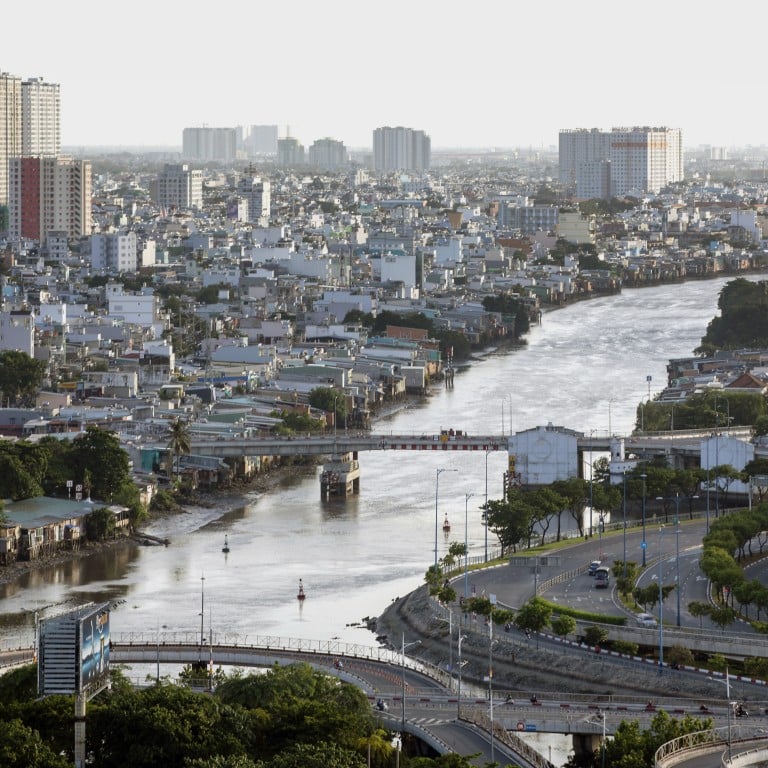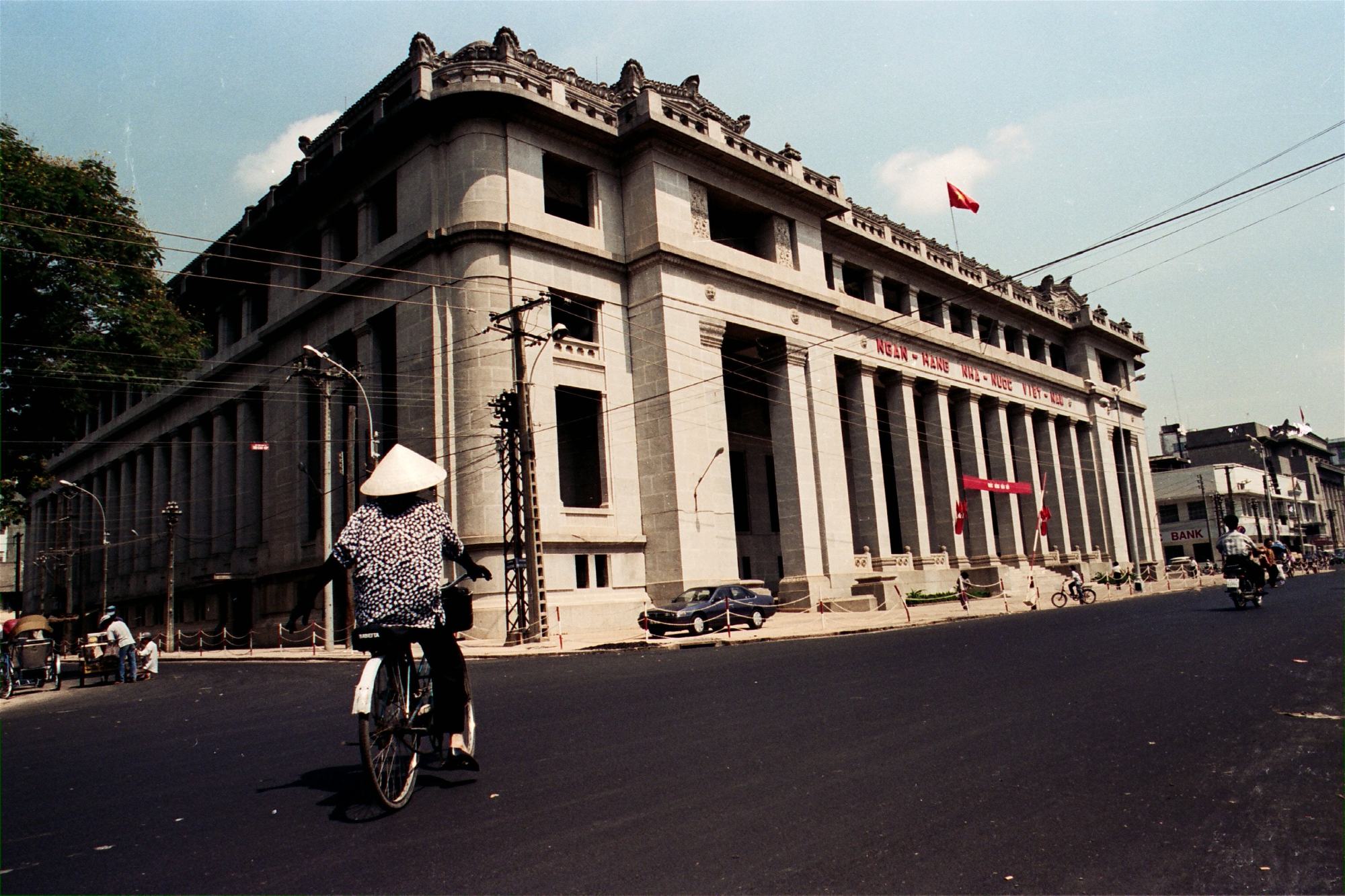
Vietnam’s corruption, poor economic management will hinder its growth — as Truong My Lan scandal shows
- The multibillion dollar scandal involving Than’s Van Thinh Phat and Saigon Commercial Bank shows that regulators are overwhelmed – and on the take
- Not only does Vietnam’s banking system remains fragile and vulnerable to simultaneous bank runs, but corruption is endemic even at the highest levels
In addition to 30 trillion dong (US$1.24 billion) in fraudulent bond issues, Truong My Lan – who was arrested on October 8 last year – has been accused of embezzling some US$12.53 billion from Saigon Commercial Bank (SCB), which she secretly controlled. To put that figure into perspective, it’s equivalent to 3.2 per cent of Vietnam’s gross domestic product.
The investigation into property developer Van Thinh Phat (VTP), which Lan chaired, raises very important issues about Vietnam’s economic management and anti-corruption efforts.

In 2011, three small commercial banks faced insolvency. The three banks shared many commonalities: they lent most of their assets to a few players in the real- estate sector, had lax internal controls, were awash with non-performing loans, and had experienced bank runs when key shareholders ran afoul of the law. Most importantly, all three were all secretly controlled by Lan, through nominees.
The State Bank of Vietnam – the central bank – arranged for the three banks to be merged into SCB. But there were no legal consequences for Lan, probably due to her political connections. So it’s little surprise that 12 years later, the same bank, owned by the same person, repeated the fraud, just at a much larger scale.
Vietnam has been a darling of foreign investors, with US$22 billion and US$25 billion pledged in 2022 and 2023, respectively. But the case of Lan and VTP/SCB should serve as a reminder that Vietnam’s endemic corruption and unwillingness to address fundamental problems in the banking system and improve its economic management will hinder its growth.
Untangling Lan’s shady corporate web
Lan, now 67, started out as a hair-accessories trader in a market in Ho Chi Minh City’s District 5 before moving into real estate in 1992, allegedly thanks to her political connections. Within a few years, she was able to secure some of the most valuable properties in the city, including several on Nguyen Hue Boulevard, one of the most expensive streets in Asia. She cultivated political support by being a generous sponsor to major city initiatives.
At the heart of her business were SCB, several property firms and investment funds. But a year after her arrest police are still untangling her corporate web, which included more than 1,000 companies, mostly shells, created to secure bank loans.
The growth of Lan’s business empire was fuelled by taking on large amounts of debt through the commercial bond market. Her businesses issued 25 different tranches of bonds that were aggressively sold through SCB, raising 30 trillion dong.
But most of her capital was raised through bank borrowing. Lan allegedly controlled 91 per cent of SCB, through 27 nominees, and between February 2018 and October last year, 93 per cent of its loans were directed to VTP and its shell companies without collateral, repayment schedules, or normal due diligence.

Lan got away with it by bribing a senior regulator at the central bank and 23 other state regulators with US$5.2 million to falsify their oversight reports of SCB and hide bad debts and evidence of wrongdoing.
While Lan was never formally linked to SCB, her arrest immediately prompted a bank run. The central bank quickly intervened and promised to guarantee deposits, assuring the public that it was undertaking the “necessary measures” and putting the bank under “special control” to ensure that SCB remained liquid and able to continue normal operations. Meanwhile, the Ministry of Public Security cracked down on any social-media posts about the bank’s solvency, arresting several people as a deterrent to others.
In all, prosecutors intend to file charges against 86 people. Lan’s husband remains at large, liquidating assets. Two suspects died while in police custody, and another died by suicide. In October 2023, the Ministry of Public Security issued arrest warrants for seven SCB executives, including two former chairmen.
An abject failure of oversight
The scale of the VTP fraud is just breathtaking. So what does this case say about Vietnam’s economic management?
First, Vietnamese regulators have proven to be overwhelmed by the economy’s growth. The ease of establishing shell corporations, the culture of complex cross-ownership, and the lack of due diligence, led to US$12.5 billion in embezzlement at one bank alone.
This was an abject failure of oversight. One year after Lan’s arrest, no senior leader in the government or central bank has lost their job over the VTP/SCB scandal.
Second, the banking system remains fragile. Like VTP/SCB, many of the local conglomerates – most of which are heavily invested in real estate – have affiliated banks in the ecosystem to leverage capital, so any further collapses would entail bank runs. And due to Lan and the real-estate bubble, the government has tightened the commercial bond market.
If regulators were on the take from Lan, why should we expect anything else from the other 40 financial institutions in the country?
In the case of SCB, the central bank was able to step in and guarantee deposits, but it’s not clear that it would have the resources or acumen to respond to multiple simultaneous bank runs.
The central bank recently put forward for government approval a restructuring plan for SCB, and in September appointed a new chairman. Yet the bank remains saddled with VTP’s non-performing loans.
Following a banking crisis in the early 2010s, the government in 2013 established the Vietnam Asset Management Company (VAMC) to purchase non-performing loans from banks, to shore up their balance sheets.
But to put this into perspective, by 2019, VAMC only had around US$1 billion in cash and bonds to buy up bad debts. And non-performing loans are increasing. A recent report by the State Inspection Commission showed a 52 per cent increase in bad debts at 28 banks in the third quarter of this year. Unless VAMC gets a significant injection of capital, it could be overwhelmed.
‘Innovation is everything’: what fast-growing Vietnam is learning from China
Third, corruption remains endemic. This was evident at two levels. The corruption involving the central bank personnel and other government regulators raises significant questions about the capacity and integrity of regulators who were paid to cover up the portfolio of bad debts and evidence of criminal wrongdoing. Every one of the 24 regulators who were responsible for overseeing SCB was on the take. If regulators were on the take from Lan, why should we expect anything else from the other 40 financial institutions in the country?
SCB’s establishment in 2011 should have itself raised eyebrows among regulators, as all three of its constituent banks had chequered management, large amounts of non-performing loans, and had seen bank runs. Yet regulators overlooked all the red flags as well as Lan’s hidden ownership.
Finally, authorities are still unwilling to provide an answer to how Lan acquired secure access to 156 properties, including some in Ho Chi Minh City’s most high-end district. All land is owned by the state and, thus, requires political connections.
Lan had been under suspicion for at least five years, but was never arrested until 2022. There’s been no official explanation as to why, but there’s plenty of suspicion that she had too much information on politicians involving shady businesses, taking advantage of Vietnam’s booming real-estate sector.
That is where the investigation has stopped.
Zachary Abuza is a professor at the National War College in Washington, DC, where he focuses on Southeast Asian politics and security issues. The views are his own and do not reflect those of the National War College or Department of Defence.

